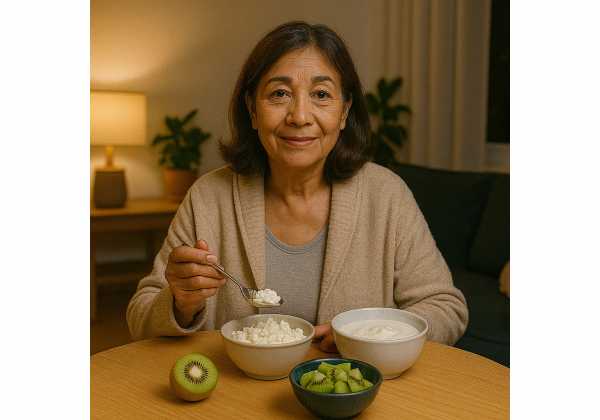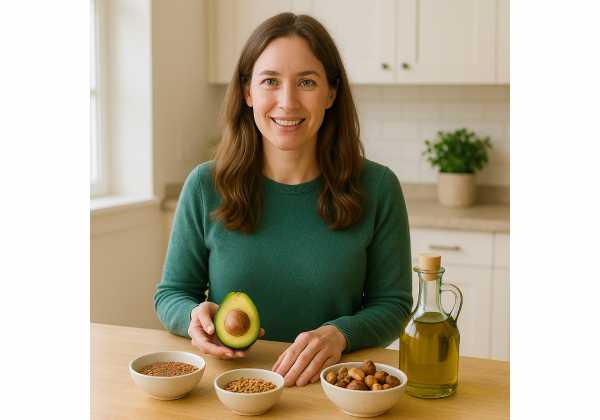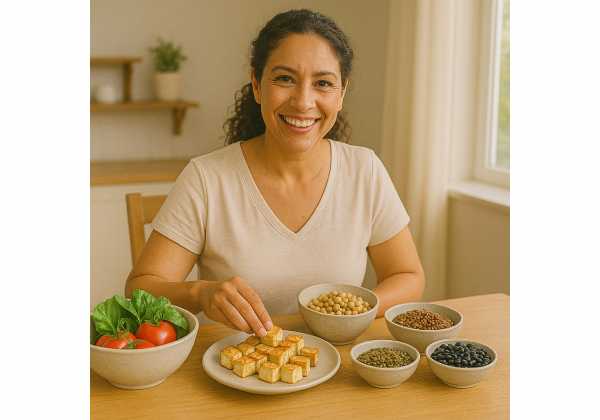Dinner for Longevity: Protein, Plants, and Easy Prep
A well-built dinner does more than end your day—it sets up tomorrow’s energy, recovery, and appetite control. When evening meals regularly deliver enough protein, diverse plants, smart carbohydrates, and healthy fats, they help preserve muscle, stabilize cardiometabolic markers, and support better sleep. This guide translates the best evidence into practical dinner moves: how much protein to aim for (and...
Eating Out for Longevity: Restaurant and Travel Strategies That Work
Eating away from home does not have to derail long-term health. With a few reliable moves, you can turn most restaurant menus, airport kiosks, and hotel options into balanced, satisfying meals that fit your goals. The key is to build around protein, vegetables, and smart carbohydrates, then use small requests to remove excess sugar, salt, and oils without sacrificing...
Evening Nutrition for Sleep in Aging: Cottage Cheese, Yogurt, and Kiwi
Evening eating can either protect your sleep or chip away at it. As we age, hormones that regulate appetite and circadian rhythm shift, nighttime reflux becomes more common, and small nutrition mistakes add up. A thoughtful evening snack can help: a light protein plus a modest, fiber-friendly carbohydrate often steadies blood sugar, quiets late hunger, and reduces wake-ups. In...
Fermented Foods and Healthy Aging: Yogurt, Kefir, Kimchi, and Miso
Aging well is easier when daily meals work for you, not against you. Fermented foods—yogurt, kefir, kimchi, miso, tempeh, sauerkraut, and others—offer a practical path: they deliver live cultures, bioactive compounds, and flavor that helps healthy choices stick. The goal of this guide is to turn that promise into an actionable plan you can use this week. You will...
Fiber for Longevity: How Many Grams and the Best Food Sources
A higher fiber diet is one of the simplest, most reliable ways to support long-term health. Fiber helps improve blood lipids, blunt glucose spikes, and promote comfortable regularity. It also feeds the gut microbiome, which produces short-chain fatty acids that support the intestinal lining and may influence immune and metabolic health. Yet most adults fall short by 10–15 grams...
Food as Medicine for Healthy Aging: Practical, Everyday Examples
Aging well is easier when your daily meals do part of the work. “Food as medicine” does not mean skipping medical care. It means building plates that support systems you care about—heart, brain, bones, digestion—so routine appointments bring good news more often. Instead of chasing hacks, you’ll rely on patterns: steady protein, generous plants, smart fats, and minimally processed...
Food Safety for Older Adults: Smart Shopping, Storage, and Reheating
A longer life is a gift—and it is easier to enjoy when foodborne illness stays off the guest list. As we age, immune defenses slow and common medications change how our bodies react to bacteria and viruses in food. The good news: most risk lives in predictable places and can be lowered with a handful of steady habits. This...
Gluten and Dairy in Healthy Aging: Who Benefits from Cutting Back
Aging well is easier when your daily foods help—rather than hinder—how you feel. For many older adults, gluten and dairy spark questions: do they cause bloating or brain fog, or are they harmless staples? The truth is nuanced. Some people have clear medical reasons to avoid specific components of wheat or milk. Others notice milder, pattern-based symptoms they can...
Glycemic Load and Healthy Aging: Lowering Post-Meal Spikes with Food
Stable blood sugar after meals protects energy, focus, sleep, and long-term cardiometabolic health. With age, insulin sensitivity often declines, muscle mass drifts down, and evening activity falls—three trends that make post-meal spikes more likely. The good news: everyday food choices can flatten those spikes without rigid rules or expensive gadgets. This guide explains glycemic index and glycemic load in...
Gut Friendly Nutrition for Longevity: Polyphenols, Fiber, and Ferments
A resilient gut supports the systems that protect healthy aging: immune function, glucose control, cognition, and bone and muscle health. The microbes that live in your colon thrive on a broad range of plant foods and gentle, regular routines. This guide translates microbiome science into practical shopping lists, plate formulas, and easy wins you can repeat each week. You...
Healthy Fats for Longevity: Olive Oil, Nuts, Seeds, and Avocado
A longer, healthier life is not built by a single nutrient. It comes from daily patterns that ease strain on the heart, stabilize blood sugar, and keep the brain resilient. Healthy fats—especially extra-virgin olive oil, avocado, nuts, and seeds—sit at the center of those patterns. They replace saturated and ultra-processed fats, carry fat-soluble vitamins, and supply bioactive compounds that...
Heart Healthy Eating for Longevity: Practical Plate Framework
Heart health is built one meal at a time. What you place on your plate shapes blood pressure, lipids, and long-term risk—not by chasing superfoods, but by repeating smart patterns. This guide lays out a clear plate framework you can use at home, in restaurants, and while traveling. You will learn how to balance protein, produce, and smart carbohydrates;...
High Fiber Lunches for Healthy Aging: Bowls, Soups, and Salads
Midday is a prime window to front-load fiber, plants, and protein so the rest of the day feels steadier. A high-fiber lunch flattens afternoon glucose swings, supports regularity, and keeps evening portions in check. This guide turns that idea into practice with mix-and-match bowls, soups, and salads you can assemble in minutes. You will learn realistic fiber targets for...
High Protein Plant Eating for Longevity: Tofu, Tempeh, and Legumes
A plant-forward plate can deliver the protein and amino acids your muscles and brain need—without relying on meat. The trick is protein density and the right mix of soy foods, beans, lentils, and seeds so each meal reaches the leucine “signal” older adults require to build and maintain muscle. In this guide, you’ll learn how to hit per-meal protein...
Hydration and Electrolytes for Healthy Aging: How Much and When
Staying well hydrated is one of the simplest ways to support energy, cognition, digestion, and cardiovascular health as you age. Yet fluid needs shift with body size, medications, climate, activity, and even sleep timing. Thirst also becomes a blunter signal with age, which means relying on sips “when you remember” often falls short. This guide translates the science into...
Hydration Rich Foods for Longevity: Fruits, Veg, and Broths
A glass of water matters, but what’s on your plate can hydrate you just as effectively—and sometimes more comfortably—than your bottle. Water-rich fruits, vegetables, and broths carry not only fluid but also potassium, magnesium, fiber, and polyphenols that support blood pressure, digestion, skin function, and steady energy. They help you absorb fluid, retain it where you need it, and...




















